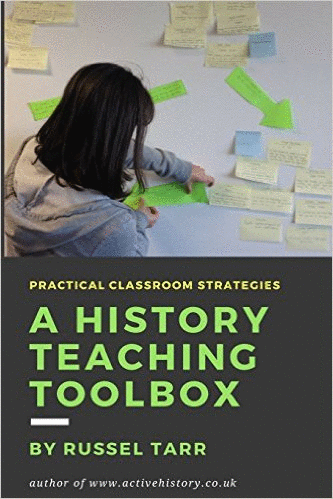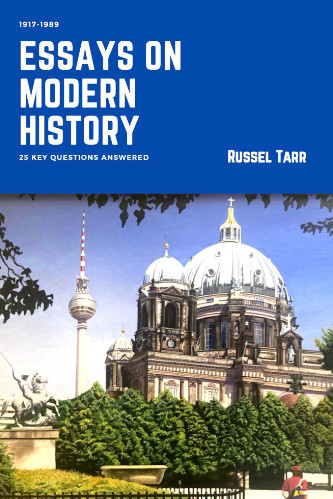Resources to help you get the most out of a World War One school Battlefields Tour.
The following materials are designed around a World War One battlefields of the Somme and Ypres.These materials support the WW1 Battlefields Trip which follows my studies of the Great War through such topics as: Causes of World War One | Life in the Trenches in World War One | Causes for Germany's Defeat in World War One | Remembrance Day: Activities for all Year Groups | Origins of WW1 and WW2: Comparisons and Contrasts A. Before the TripOnline Presentation: What were the essential causes of World War One?This short presentation is designed to provide students with an essential overview of the main causes of the war in a single lesson. I don't teach this in any more detail at this stage as the causes of the war are a key part of the IGCSE syllabus (here). Decision-Making Simulation: Can you survive life in the trenches? [FREE]"In this simulation you will be a British soldier who joins the army in 1914 to fight the Germans. You will learn about the conditions which soldiers lived and fought in, and the dangers they faced. There is a worksheet to go with this activity which you should complete as you proceed. You can also save your progress at any time so you can continue the game over several lessons or as homework. There is even a leaderboard!" Follow-up factual test (20 questions)This factual test ensures that students completed the worksheet from the simulation and learned the information properly. Video: Richard Holmes: War Walks - The Somme (28m) | Student Worksheet | Teacher AnswersThe late, great Richard Holmes is still the best TV military historian. Here's a video, worksheet and teacher answers on the Battle of the Somme. It is good to show this after the students have played the simulation so that they can get an in-depth understanding of this battle in particular.
|
| Length of Trip | Hotel | Somme | Ypres | Oradour | Google Earth itinerary | |
| Option 1 | Three full days of visits. | Based in Albert. | Two full days visiting sites on the Somme. | One full day visiting sites around Ypres. | Visit to Oradour on the way back. | |
| Option 2 | Two full days of visits. | Based in Ypres. | One full day visiting sites on the Somme. | One full day visiting sites around Ypres. | Visit to Oradour on the way up. |
During the long coach journey it's a good idea to have some relevant recommended World War One DVDs to watch. I have a full list of recommended DVDs for the History Classroom.
C. Information sheets and suggested activities [FREE]
Each of these worksheets can be printed out separately and then collated into a customised workpack depending upon the exact itinerary of your school trip.
Essential Context: Providing an essential narrative overview of the war on the Western Front, with specific mention of many of the sites listed below for context.
Beaumont Hamel: Site of the Newfoundland Memorial and the Highlanders' Memorial
Compiegne Armistice Site: Where the war finally came to an end
Dartmoor Cemetery: Containing the graves of a father and son, and a soldier 'shot at dawn'.
Devonshire Cemetery: Containing the graves of Duncan Martin and the poet William Noel Hodgson
Flatiron Copse Cemetery: Containing the grave of the VC Winner Edward Dwyer, whose voice was uniquely recorded.
Fricourt German Cemetery: Original resting place of the "Red Baron"
Langemarck German Cemetery: Foreboding cemetery in stark contrast to Tyne Cot, which is just a few kilometres away.
Lijssenthoek Cemetery: Casualty clearing station cemetery with an unusually high proportion of named graves; final resting place of Nurse Nellie Spindler.
Lochnagar Crater: Relic of one of the gigantic underground mine explosions which heralded the start of the Battle of the Somme.
Menin Gate: The "memorial to the missing" in Ypres.
Indian Memorial, Neuve Chapelle: Especially great to visit if you have students with Indian heritage.
Neuville St. Vaast: The largest German war cemetery in France.
Notre Dame de Lorette: Largest French war cemetery in the world; also site of the "Ring of Remembrance"
Oradour-sur-Glane: Preserved ruins of a village subject of a notorious Nazi atrocity at the end of World War Two.
Historiale de la Grande Guerre, Peronne: An especially well-constructed museum.
Pozieres Australian Memorial: Particularly good to visit if you have Australian students.
Serre Memorial: To the "Accrington Pals", and site where Wilfred Owen wrote his poem "The Sentry".
South African Memorial, Delville Wood: Originally built during the apartheid era and now redesigned to highlight the contribution of black South Africans.
St. George's Chapel, Ypres: Built after the war largely by veterans working on the war cemeteries. Packed with relics and memorials.
Talbot House: Refuge for soldiers when they were resthing behing the lines near Ypres. Now a wonderful preserved museum.
Thiepval Memorial: Commemorating the missing of the Somme. Recently improved with a new visitor center.
Tyne Cot: Largest Commonwealth war cemetery in the world, situated at the site of the Battle of Passchendaele.
Ulster Tower: Commemorating the sacrifice of Northern Irish soldiers during the Battle of the Somme.
Vimy Ridge: A breathtaking memorial and visitor center, preserved trenches, and an opportunity for a tour of the underground tunnels.
Welsh Memorial, Mametz: Commemorating the sacrifice of Welsh soldiers during the Battle of the Somme.
D. After the Trip
It is important to follow-up the Battlefields Trip with meaningful activities and reflection to ensure the students get the most out of the experience. Some ideas include:
Museum Exhibition Task
Students put together a major exhibition in the school, complete with a workpack (for secondary | primary students) and "character card" activities, and acted as guides for students in Years 5-9 to share their experiences.
Design a Memorial / Visitor Center [worksheet]
Students can also use what they have learned to design their own memorial and visitor center in a group task ("The Commonwealth War Graves commission has decided to create a new memorial and visitor center to commemorate the war. Your task is to formulate your own concept for a memorial and visitor center and persuade the CWGC to commission your project"). As part of this process, students could make use of some of these Virtual Reality Images of War Memorials.





© 1998-2025 Russel Tarr, ActiveHistory.co.uk Limited (Reg. 6111680)
1 Torrin Drive, Shrewsbury, Shropshire, SY3 6AW, England
Privacy Policy | Contact


 How effectively did the Commonwealth War Graves Commission commemorate the Fallen?
How effectively did the Commonwealth War Graves Commission commemorate the Fallen? 





